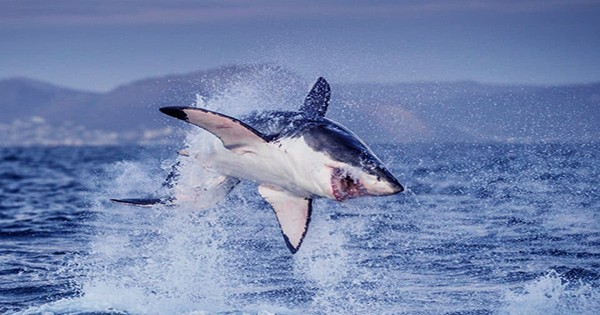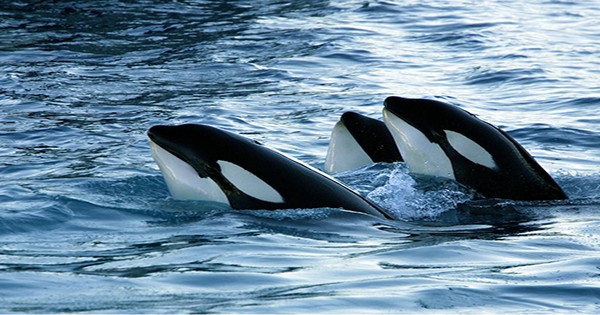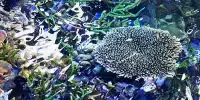For the first time, an orca (killer whale) was spotted individually swallowing a great white shark in less than two minutes.
“The astonishing predation off the coast of Mossel Bay, South Africa, represents unprecedented behavior, underscoring the killer whale’s exceptional proficiency,” says Dr. Alison Towner of Rhodes University, who led an international study team to the finding.
Their findings were reported in the African Journal of Marine Science.
The groundbreaking discovery is the latest from Dr. Towner and his team, who revealed in 2022 in the same journal that a pair of orcas had been hunting and killing great white sharks off the coast of South Africa since 2017, driving large numbers of sharks from their natural aggregation sites.
Orcas are known to cooperate to catch huge prey such as sea lions, seals, and even other whales—and, of course, sharks. Hunting together allows them to encircle prey and attack with their combined intellect and muscle.

They can hunt enormous animals independently. However, this is the first such occurrence on one of the world’s largest predators, the great white shark.
“Again, as previously in South Africa, the orcas are exhibiting a strong preference for extracting and consuming the lipid-rich livers of white sharks—a specialized feeding behavior,” explains Dr. Towner, who has studied great white sharks for the last 17 years, learning about their movement patterns through tagging data.
“But what we saw was an orca, dubbed Starboard due to his collapsed dorsal fin, performing alone to incapacitate and swallow a white shark in less than two minutes.
“Starboard was witnessed preying on a 2.5-meter (8.2-foot) juvenile white shark before taking the shark’s liver past a boat.
“This sighting provided indications of lone hunting by at least one killer whale, which challenges the region’s traditional cooperative hunting patterns.
“These are groundbreaking insights into the predatory behavior of this species, and our findings significantly contribute to the global understanding of Killer Whale predation dynamics, enhancing knowledge of marine ecosystems and predator-prey relationships.”
During the observed contacts of this event, at least two white sharks were killed, as demonstrated by the discovery of another body measuring 3.55 meters (11.6 feet) nearby.
“The study raises critical questions about the impact of killer whale predation on shark populations in South Africa,” said Dr. Towner. “The displacement of various shark species due to killer whale presence may have implications for mesopredator release and potential trophic changes in the marine ecosystem.”
Understanding the ecological dynamics of killer whale predation is critical to marine conservation efforts. According to the scientists, this incident “underscores the urgent need for adaptable conservation strategies and vigilant ecological monitoring amidst changing environmental conditions.”
Dr. Simon Elwen, the founding director and principal scientist at Sea Search Research & Conservation and the Department of BotZoo at the University of Stellenbosch, is an expert in whale ecology, behavior, and conservation.
Regarding the significance of Dr. Towner’s team’s discoveries, he states, “The observations described here add further layers to the interesting story of these two killer whales and their potential. Killer whales are sophisticated, top predators that may quickly learn new hunting strategies on their own or from others, so monitoring and understanding the behaviors performed here and by other killer whales in South Africa is critical to learning more about these animals.”
Land-based observers, tourists on vessels, and partnering institutions all played a “pivotal role” in gathering critical data and footage of predation occurrences.
This occurrence “underscores the benefits of citizen science as a collaborative effort between researchers, tourists, and organizations,” according to the authors.
Esther Jacobs of the marine conservation campaign Keep Fin Alive describes her experience observing the predation: “Upon arriving at Mossel Bay’s Seal Island, the scent of shark liver oil and a noticeable slick indicated a recent kill.” Tracking Port and Starboard near the island, they remained apart.
“Seeing a white shark’s fin breaking the surface sparked joy at first, but it quickly turned to a melancholy realization as Starboard neared. Starboard’s quick predation on my favorite shark species was both tragic and intensely strong.
Co-author Dr. Primo Micarelli of the Shark Studies Center and Siena University was on board the vessel White Shark Africa and stated, “Over two decades of annual visits to South Africa, I’ve observed the profound impact these killer whales have on the local white shark population.” Seeing Starboard transport a white shark’s liver past our ship is an incredible experience.
“Despite my awe for these predators, I’m increasingly concerned about the coastal marine ecology balance.”
Finally, Dr. Towner emphasizes that the new findings on killer whales provide vital further insights into how adaptable mammalian predators specialize and diverge ecologically.
“The existence of these shark-hunting killer whales may have implications for broader ecological dynamics. The rapid evolution of this phenomenon makes it difficult for research to keep up, forcing us to issue these timely short statements.”













